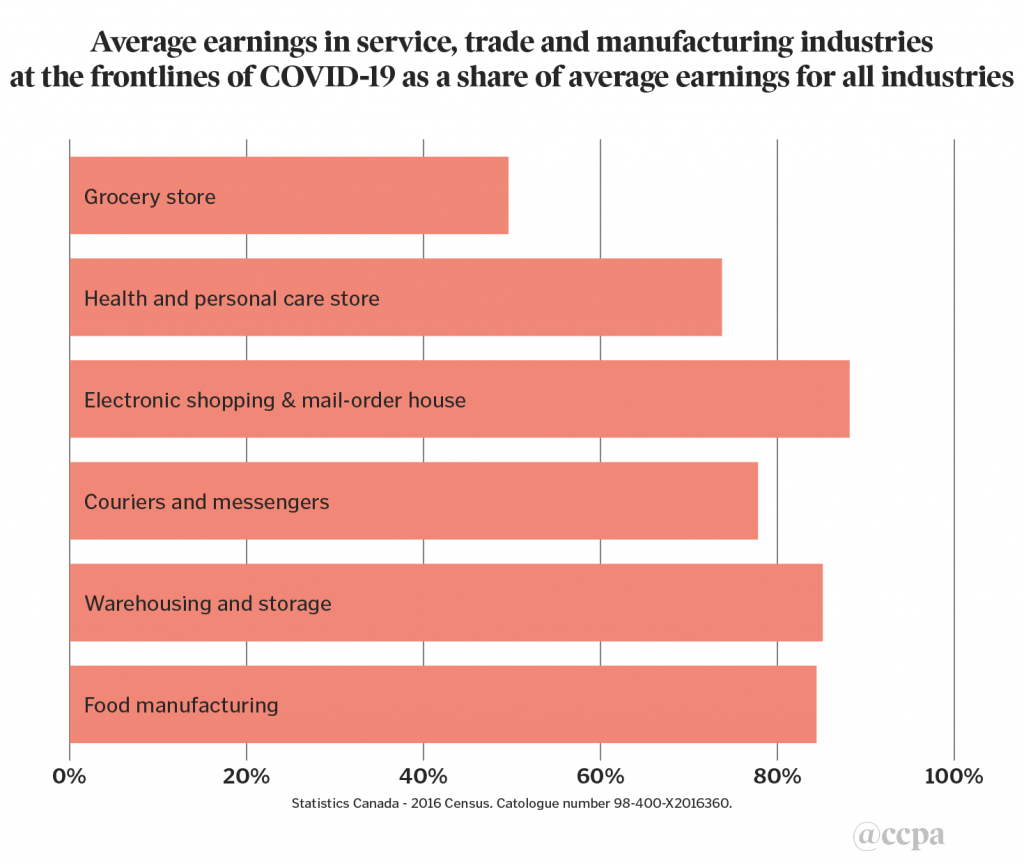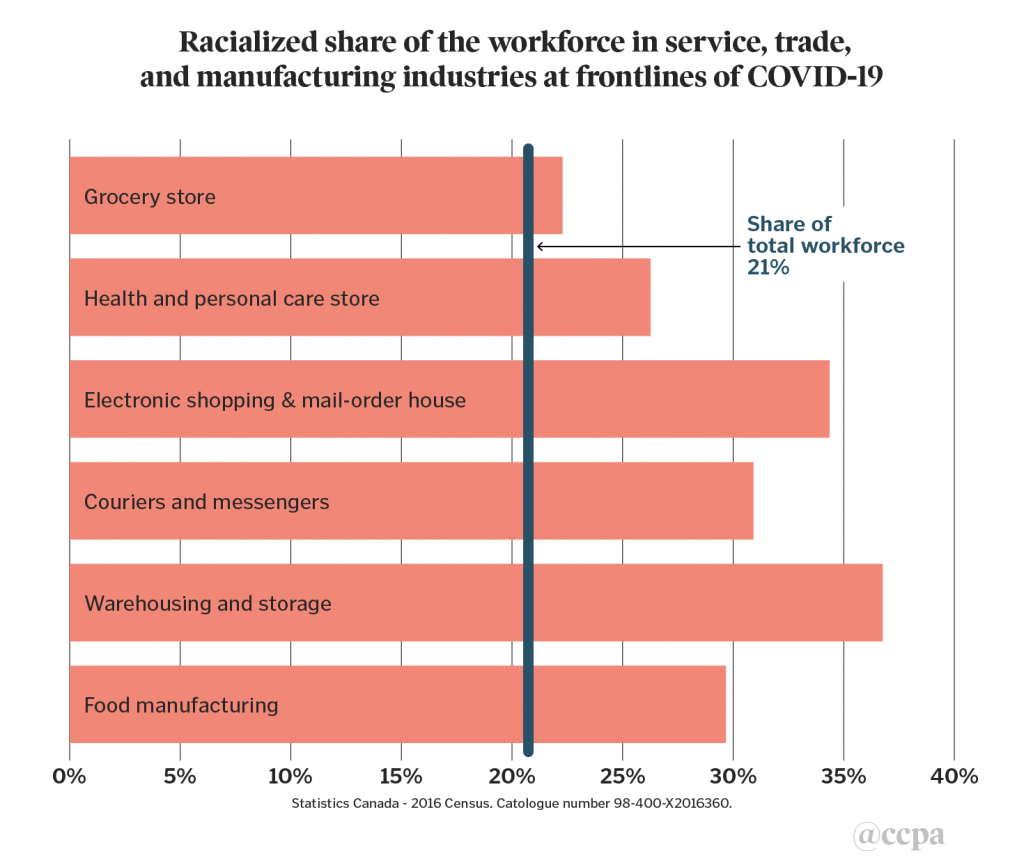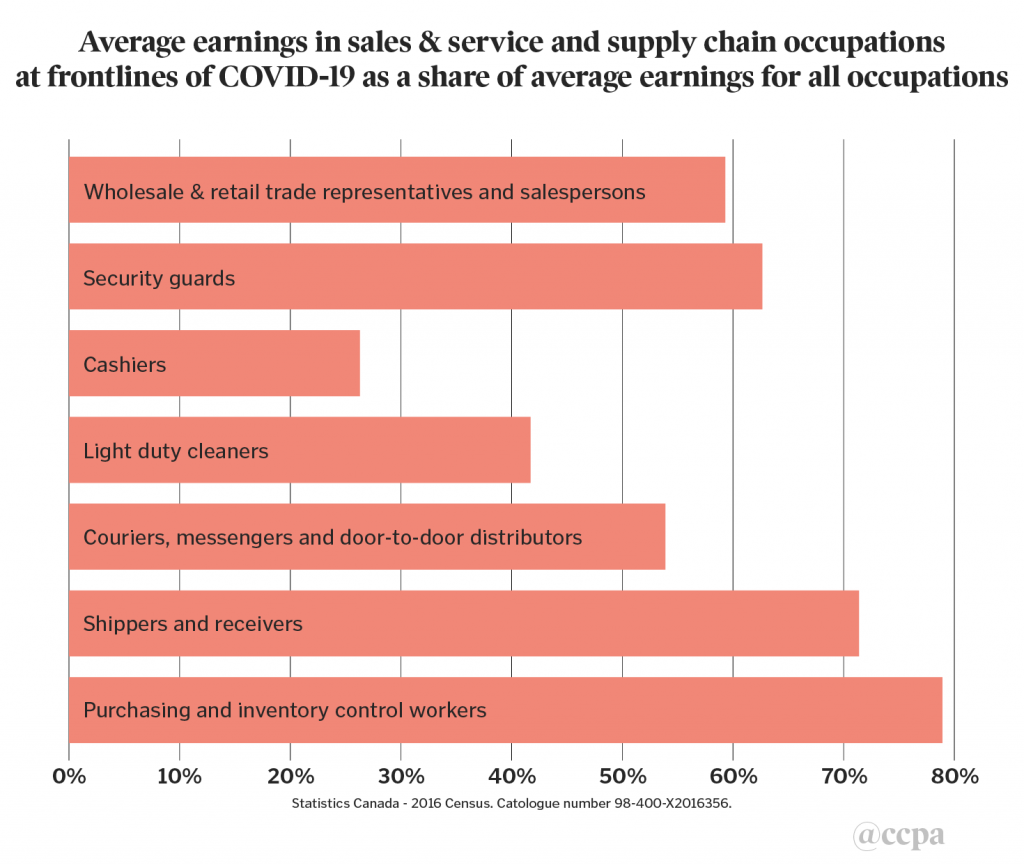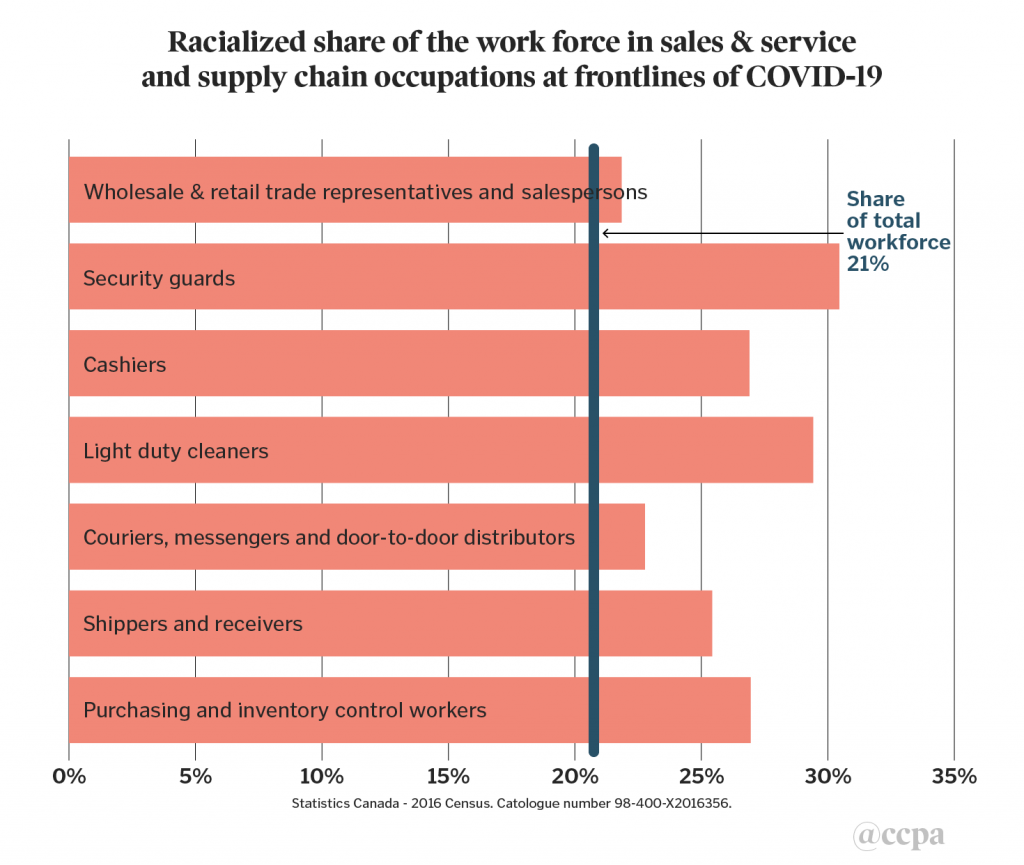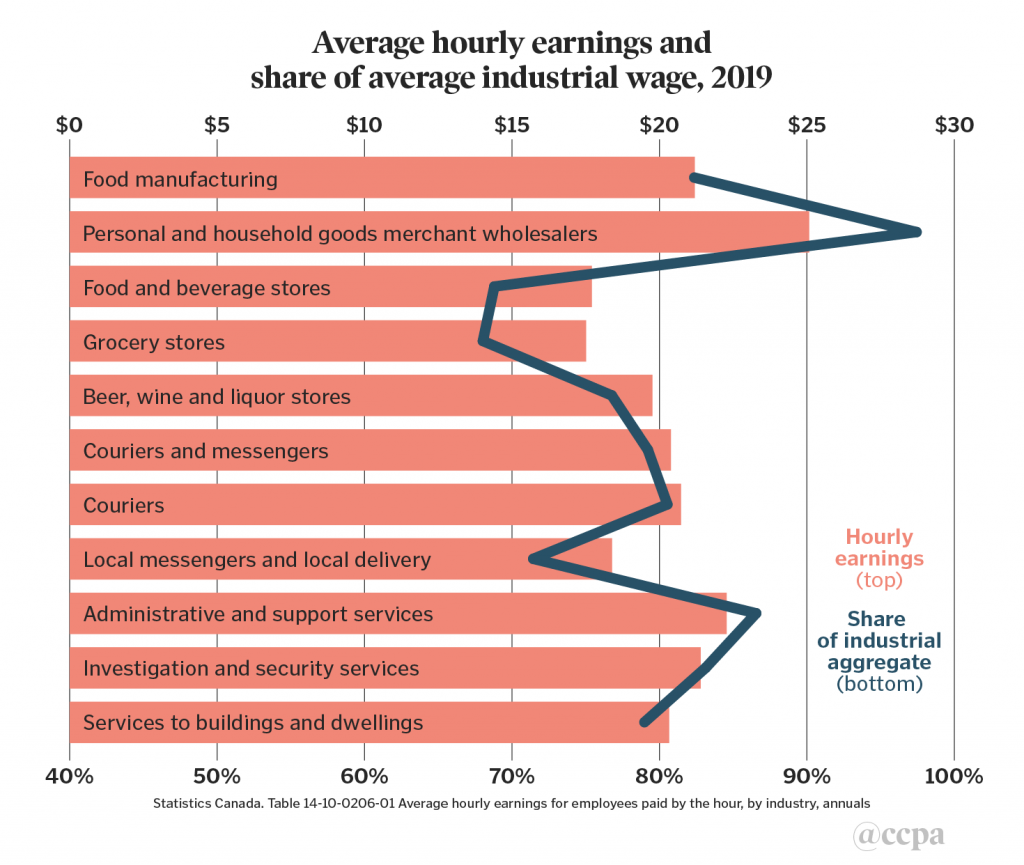If COVID-19 has taught us anything, it’s that a lot of the people we pay the least are the ones we need the most.
In the last two weeks, Canadians have come to appreciate the critical role of the workers in the “supply chain” that keeps us alive. From food processing workers to grocery store cashiers, from warehouse workers to couriers, millions of workers are on the job in this pandemic to meet our most basic needs. We need food and medicine, and they deliver.
Along with health care workers (whom we’ll discuss in a future blog), these are the frontline fighters in the battle against COVID-19.
Recent policy moves by governments to help workers who have lost income and employment as a result of COVID-19 are welcome. The new Canada Emergency Response Benefit will provide improved income supports and will capture many more workers than Employment Insurance did, as will the new federal wage subsidy for small businesses.
But what about the people who are still working?
Some industries and occupations aren’t losing jobs in the pandemic; they are adding them. These jobs, we now see, are essential to our well-being. But with the pandemic, they are also more dangerous than ever. And we are simply not doing enough to protect the workers in these jobs.
On the front lines: where the essential jobs are We can glean from news reports where the increased hiring is occurring. Retail outlets like grocery stores, drugstores, and general merchandise stores like Walmart and Dollarama are hiring. As more people turn to e-commerce to limit physical contact, online shopping giants like Amazon and gig companies like Instacart are adding jobs. Food manufacturers like Maple Leaf Foods are also hiring.
Most of these jobs cannot be done from home. They are in industries with workplaces where the possibility for physical distancing is extremely limited, often impossible. Most of the workers in these industries are not unionized, and workers face regular violations of employment standards and health and safety standards. Some of these employers, like Amazon, are notorious for their hard-hearted treatment of the people who make their profits possible.
Some of the most dangerous and precarious jobs are concentrated in sales, service and supply chain occupations, such as delivery and warehouse workers. Many of the workers who are shopping or delivering food or other supplies are “gig” workers who are misclassified as independent contractors, not employees, and therefore not afforded the basic protections of minimum employment standards.
Unsurprisingly, the workforce in these low-paid industries is disproportionately racialized. They employ many recent immigrants and are likely to employ undocumented workers.
We used 2016 Census data to look at how earnings in these essential occupations and industries compared to those across the labour force. We also used the data to look at whether racialized workers are over-represented in these industries. The data that is available at this level of detail is for annual employment income in 2015.
The work is essential, the wages are low Workers in all these industries earn less than the average across all industries. The earnings in these industries range from a high of 88% of annual average earnings for the workers behind online shopping to a low of 50% for those who work in grocery stores. The graph below shows average employment earnings in these industries, as a share of the average for all jobs.
Racialized workers are over-represented in these low-wage industries. While racialized workers are 21% of the total workforce, they range from 22% of grocery store workers to 37% of workers in warehousing and storage. Racialized workers also make up 30% of workers in food manufacturing. Two categories of food manufacturing have even more racialized workers: they account for 41% of workers in meat product manufacturing and 37% of those in bakeries. This is close to twice their share of the total workforce.
Protecting health and safety during a pandemic is crucial, and we know that unionized workplaces are safer than non-unionized ones. Unfortunately, most workplaces in these sectors are not unionized. While we don’t have unionization data specific to these industries, we do know that unionization rates are at 7.8% in the retail sector as a whole. And some gig workers who deliver food are fighting for the right to be organized. The concerted ant-union campaigns of retail giants like Amazon and Walmart are well documented.
Looking at the occupational distribution of these essential jobs, the low wages become even more evident. Shown in the graph below, average annual earnings in these occupations as a share of the average for all workers range from 79% in purchasing and inventory control workers to 26% for cashiers.
Racialized workers are over-represented in all of these low-paid and dangerous occupations, as the graph below shows. They range from 30% of security guards to 29% of light duty cleaners and 22% of sales representatives in wholesale and retail trade.
We are only as safe as our frontline workers: here’s what we need to do News reports of individual companies increasing pay rates and improving health and safety practices in the face of COVID-19 are welcome. However, we cannot expect these essential workers to have to rely on the good will of individual employers. Governments across Canada need to act urgently to provide increased protections to these workers.
Ensuring that workers can go and stay home if they are sick, or if a family member is sick, is crucial. All jurisdictions in Canada should provide 21 paid emergency leave days: 7 permanent personal emergency leave days, and an additional 14 paid sick days during this pandemic.
Governments need to provide guidelines, with the best evidence as it evolves, on how to keep these workers safe. Labour ministries should require these industries to follow public health guidelines that allow workers to practice physical distancing in the workplace and actively prevent the transmission of COVID-19 between workers and, if relevant, the public.
In the longer term, it needs to be easier for workers in these industries and occupations to join unions if they choose to.
Today’s labour laws and employment standards are sadly out of date—they were written for a twentieth-century economy. We need new standards that ensure that all workers are safe and all workers have the income they need to live decently, bring their kids up the way they want to, and retire with dignity. These protections should be universal—accessible to all workers, including those who are undocumented or have precarious immigration status.
Canadians who are on the job in the midst of COVID-19 are working hard under difficult conditions at considerable risk to themselves. Without them, there is no supply chain. They are essential now, and they will be essential after this global pandemic is over.
As a society, we need to show our appreciation in material and meaningful ways. Now is a good time to start.
Appendix
Census data provides a greater level of detail and is the only source of data for racialized workers. However, there is more recent data available on earning by industry. The chart below shows hourly earnings for the broader industries that those described above are included in.
All of them are paid below the average industrial wage. They range from a low of $17.51 for grocery stores to $24.08 for wholesalers.
Sheila Block is a senior economist with the Canadian Centre for Policy Alternatives’ Ontario office. You can find her on twitter at @SheilaBlockTO.
Simran Dhunna is a CCPA placement student and MPH Epidemiology candidate at the University of Toronto. She is also an organizer with Climate Justice Toronto and Peel.



